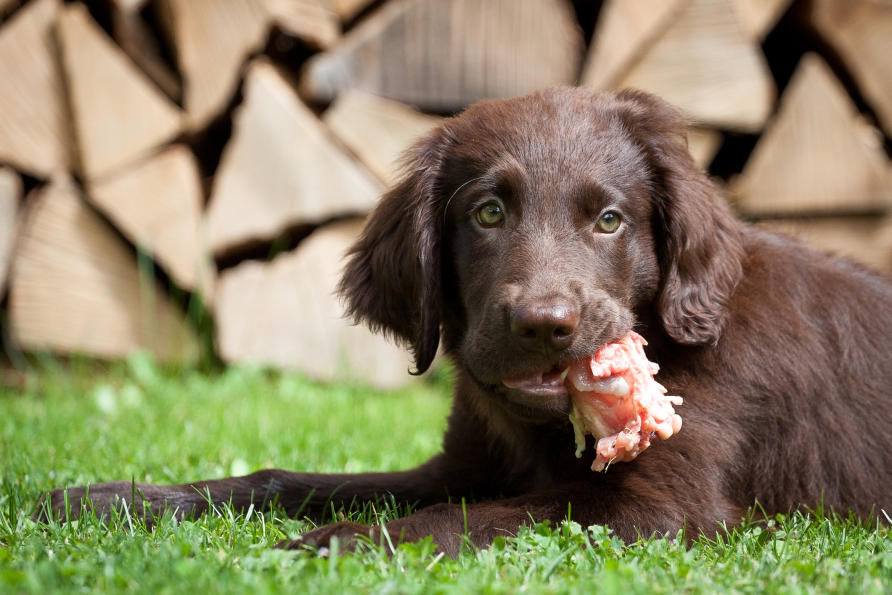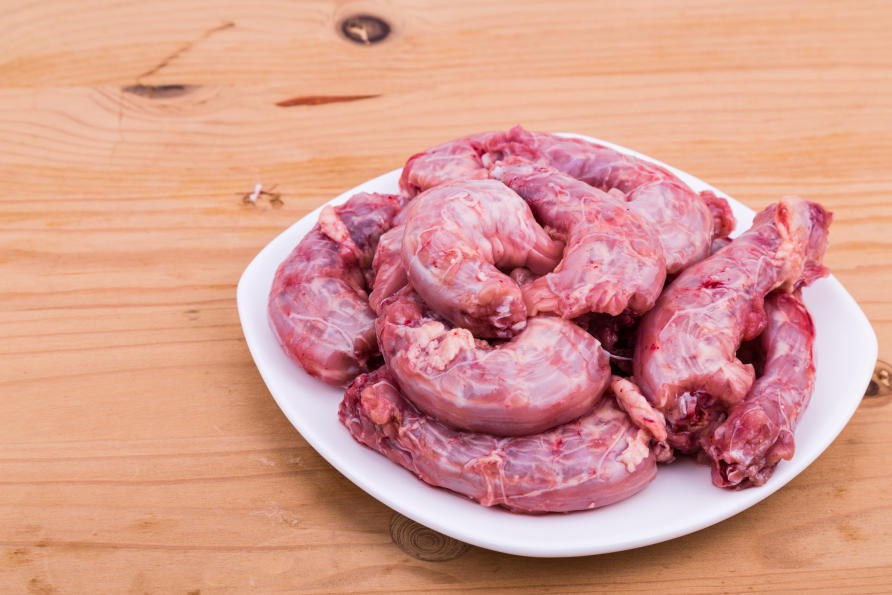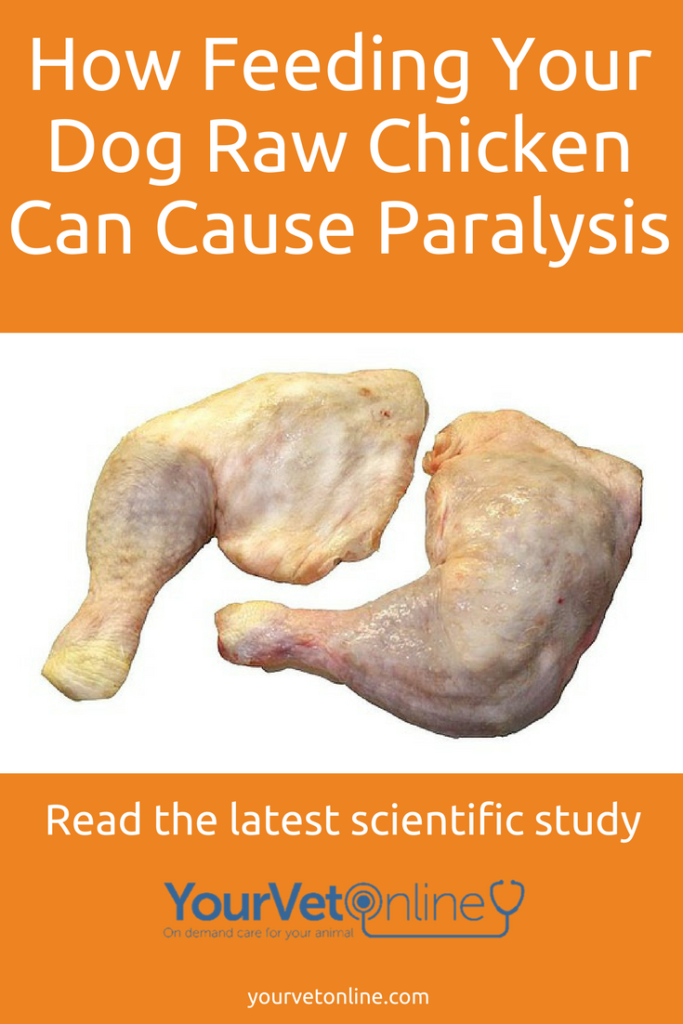Feeding Raw Chicken Is Linked To Paralysis In Dogs
[easy-social-share]
Feeding raw meat to our pets always carries a risk to their health due to the potential of a high volume of bacteria being consumed.
We need to be very careful with food hygiene for not only our dogs but also ourselves and those around us.
Chicken is a known high-risk raw meat with high bacterial contamination regardless of how carefully we store it.
Now, Melbourne University lecturers have identified feeding raw chicken as a risk factor in dogs suffering Acute PolyradiculoNeuritis (APN), a neurological condition that can last up to 6 months or longer.
This article was first published on Pursuit. Read the original article below.
Raw chicken is a risk factor in dogs suffering polyradiculoneuritis, a neurological condition that results in paralysis and can last up to 6 months or longer
Raw Chicken Linked To Paralysis In Dogs
Dr Lorena Martinez Antòn and Dr Matthias le Chevoir
As pet ownership increases across the world, our furry (as well as feathered and scaly) friends have become firmly established members of the family.
Wanting the best for our pets, we often offer special treats, and chicken necks are a favourite in many families – often considered a ‘healthy’ option.

Danger Of Feeding Chicken Necks To Dogs
But vets are warning raw chicken, particularly chicken necks, can lead to a debilitating and potentially fatal form of paralysis in dogs.
A new study, led by the University of Melbourne’s U-Vet Werribee Animal Hospital, found the consumption of raw chicken meat increases the risk of dogs developing a paralysing condition called acute polyradiculoneuritis (APN) by more than 70 times.
Dr Matthias le Chevoir, chief investigator on the project, says the cause of APN in dogs has baffled the veterinary community for a long time.
What Is Acute Polyradiculoneuritis (APN)?
The video shows ‘Jade’ experiencing paralysis after contracting APN.
“It is a rare but very debilitating condition where the dog’s hind legs first become weak. It can then progress to affect the front legs, neck, head and face. Some dogs may die from the disease if their chest becomes paralysed,” he says.
“Most dogs eventually recover without treatment but it may take up to six months or more in some cases.
“In our clinic alone we see around 30 cases per year and around three in ten cases would not recover. Watching your pet suffer is obviously very distressing and it can be difficult for owners to nurse their pet if the condition can gradually improve.”
Paralysis results from the dog’s immune system becoming unregulated and attacking its own nerve roots, progressively worsening over several days.
APN is the canine counterpart of Guillain-Barré syndrome (GBS) in humans, a condition that also causes muscle weakness and may require ventilation if chest muscles are affected.
Dr le Chevoir says the bacteria Campylobacter is now considered a triggering agent in up to 40 per cent of GBS patients. It may be present in undercooked chicken, unpasteurised milk products and contaminated water.
“Our team at U-Vet Animal Hospital wanted to understand if consuming raw chicken could also be triggering APN in dogs.
Many of us have previously worked overseas and know that a raw meat diet is less common there, so we were intrigued by this potential connection,” Dr le Chevoir says.

Study Details
Chicken necks are a particularly popular treat for small dogs, but vets are warning owners to steer clear. Picture: iStock
The team studied 27 dogs with symptoms of APN and 47 dogs without, examining physical symptoms and interviewing the owners about recent behaviours and diet; focusing on the consumption of raw chicken meat.
Faecal samples collected within seven days of the presentation of clinical signs (such as changes in voice, hind limb weakness or a choppy gait) showed the dogs with APN were 9.4 times more likely to have had a Campylobacter infection than the control group without the disease.
“The microbe Campylobacter is likely to be the reason for the dysregulation of the dogs’ immunity and the symptoms of paralysis,” lead author Dr Lorena Martinez-Antòn says.
“These bacteriological results were consistent with the hypothesis that the uncooked chicken meat was the source of the Campylobacter and as a result, triggered APN.”
In humans, scientists think Campylobacter, which is most commonly found in commercial poultry products, contains molecules similar in structure to part of the nerve cell. This similarity confuses the immune system, which attacks the body’s own nerves, resulting in paralysis.
Dr Martinez-Antòn and Dr le Chevoir say there appears to be a growing trend for feeding dogs raw meat diets, which is concerning given the risks.
“A significant association is also found between APN and smaller dog breeds. Based on our clinical experience this seems to be because smaller dogs are more likely to be fed smaller bones like chicken necks,” the doctors say in the research paper.
“We recommend owners choose regular dog food rather than chicken necks until we know more about this debilitating condition.”
CONCLUSIONS FROM THE STUDY
➡The reason for the hypothesis that campylobacter may be involved in APN in dogs, is that it has been identified as a trigger in Guillian-barre syndrome in humans, which has many identifiable similarities with APN in dogs.
➡ This study compared how many of the sick dogs tested positive for campylobacter COMPARED WITH control dogs.
A statistical difference was found.
➡ the study acknowledges that there is probably more to it.
➡ But, campylobacter was found in statistically significant amounts, so it is reasonable to put it out there as a potential cause.
➡ We can be sure this is a complex aetiology and hopefully there will be many more studies.
➡ This is the conclusion in the abstract-
‘Raw chicken consumption is a risk factor in dogs for the development of APN, which potentially is mediated by infection with Campylobacter spp.”
So they have said raw chicken consumption is a RISK factor. Which is potentially mediated by campylobacter infection.
➡ A risk factor is a risk factor – ie it is thought to be contributing to the development of the condition.
➡ There may be other factors involved but this is the one they have looked at IN THIS STUDY.
➡ It’s great that it has been published and is another bit of info we need to consider when we are making decisions about what diet to feed our pets.
➡ And they don’t say ‘don’t ever feed raw chicken necks’. They say they would suggest other choices.
More study is required, however this is one more reason to take great care with what you feed your pets.
Please note: Cooking is the only way to kill bacteria.
You can check out the full study here.
Our Facebook Page generated some interesting discussion that you might like to check out. What are your thoughts? Do you feed your dog raw chicken? Tell us in the comments section below.






Leave A Comment